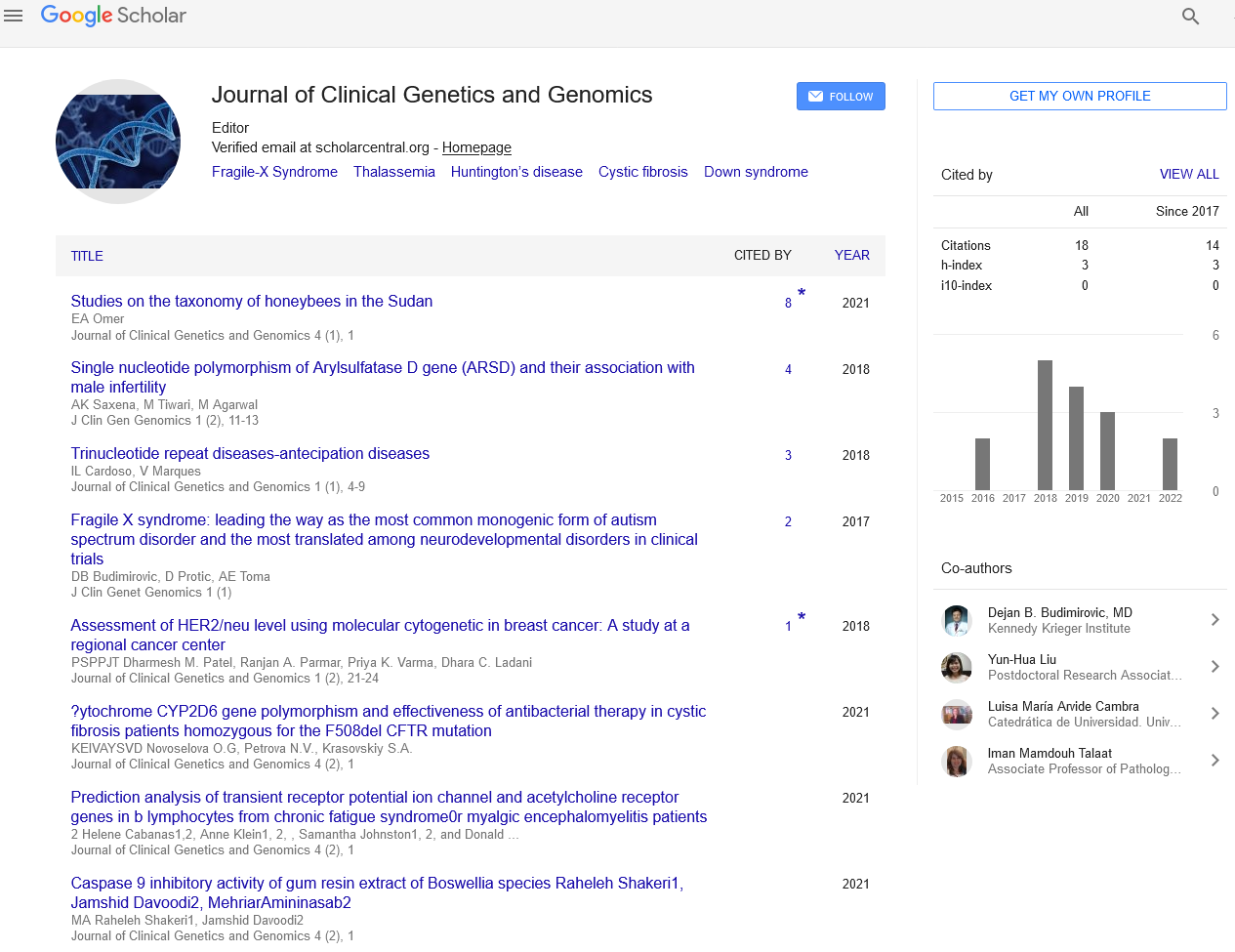A brief note on DNA and RNA sequencing
Received: 01-Oct-2021 Accepted Date: Oct 15, 2021; Published: 22-Oct-2021
Citation: Palli J. A brief note on DNA and RNA sequencing. J Genet Mutat 2021;4(3): 5
This open-access article is distributed under the terms of the Creative Commons Attribution Non-Commercial License (CC BY-NC) (http://creativecommons.org/licenses/by-nc/4.0/), which permits reuse, distribution and reproduction of the article, provided that the original work is properly cited and the reuse is restricted to noncommercial purposes. For commercial reuse, contact reprints@pulsus.com
Description
gathered by detectors, and the data is processed by a computer. Template preparation and purification, as well as the sequencing reactions themselves, are being developed using robotic workstations. The development of mass spectrometry technology for DNA sequencing is under underway. If this project succeeds, the gel electrophoresis stage in DNA sequencing will be eliminated. The use of polymerase chain reaction (PCR) technology to DNA sequence determination, which led to the creation of linear amplification sequencing, has been a huge breakthrough (cycle sequencing). This extremely powerful yet technically easy way of sequencing has a number of advantages over traditional methods, and it can be used manually or automatically. Multiplex sequencing is another recent breakthrough promised to improve speed and efficiency. This entails pooling several samples and processing them as a group. After electrophoresis, the DNA is transported to a membrane, and consecutive hybridizations with specific labeled oligonucleotides are used to obtain sequence pictures of the individual samples. To make DNA transfer to a membrane easier, multiplex DNA sequencing has been combined with direct blotting electrophoresis. To view the image on the membrane, chemiluminescent detection can be utilized in conjunction with multiplex DNA sequencing.Recent scientific discoveries that resulted from the application of nextgeneration DNA sequencing technologies highlight the striking impact of these massively parallel platforms on genetics. These new methods have expanded previously focused readouts from a variety of DNA preparation protocols to a genome-wide scale and have fine-tuned their resolution to single base precision. The sequencing of RNA also has transitioned and now includes full-length cDNA analyses, serial analysis of gene expression (SAGE)-based methods, and noncoding RNA discovery. Next-generation sequencing has also enabled novel applications such as the sequencing of ancient DNA samples, and has substantially widened the scope of metagenomic analysis of environmentally derived samples. Taken together, an astounding potential exists for these technologies to bring enormous change in genetic and biological research and to enhance our fundamental biological knowledge.
The capabilities of high-throughput sequencing methods are used in RNA sequencing (RNA-Seq) to provide insight into a cell's transcriptome. RNA-Seq gives significantly more coverage and resolution of the dynamic dynamics of the transcriptome than earlier Sanger sequencing and microarray-based approaches. RNA-Seq data can be used to discover new transcripts, identify alternatively spliced genes, and detect allele-specific expression, in addition to quantifying gene expression. Researchers have been able to better understand the functional complexity of transcription thanks to recent advancements in the RNA-Seq workflow, which includes sample preparation, library creation, and data analysis. RNA-Seq can be used to explore multiple populations of RNA, including total RNA, pre-mRNA, and noncoding RNA, such as microRNA and long ncRNA, in addition to polyadenylated messenger RNA (mRNA) transcripts.





